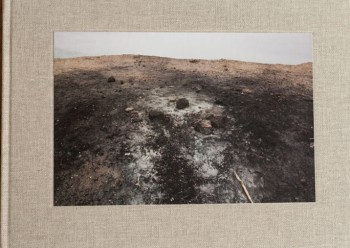Nowhere
Leon Kirchlechner
Dienacht and Der Grief
Hardcover
64 Pages
30 x 22 cm
2013
ISBN 9783000417443
With no horizon, one’s view into the distance is impeded. Scanning, searching, one’s gaze comes to a standstill in Leon Kirchlechner’s photographs. The eye may slow, but it doesn’t find repose. The peace is not contemplative: it is restless. The restricted field of view has a narrowing effect. It makes the room strangely dislocated, denies me the geographical coordinates that would give me a feeling of safety. And so, even as the onlooker, I remain dislocated in the usually centrically, often symmetrically composed images. I can’t make sense of this centrality. Nor is it reassuring. Although it gives me pause, it doesn’t offer anything for me to grasp. It’s not the enjoyable, thought-provoking stillness that many works of art inspire. Rather, it’s an oppressive, constricting stillness, one that causes alarm.
This experience has become encoded in his images. The unknown that prompts these seemingly so unremarkable existential tremors within us. That what one sees before oneself is not what one senses. Namely that what appears in the image is not even present. But that absence is exactly what arrests the gaze. The actual subject of the photograph, its raison d’être, is beyond the picture. “The absence of the imaged subject is nothing other than an intense presence, receding into itself, gathering itself together in its intensity,” wrote Jean-Luc Nancy. This is addressed fundamentally and unremittingly in Leon Kirchlechner’s images.
What is present in the image is, in fact, what is absent.









